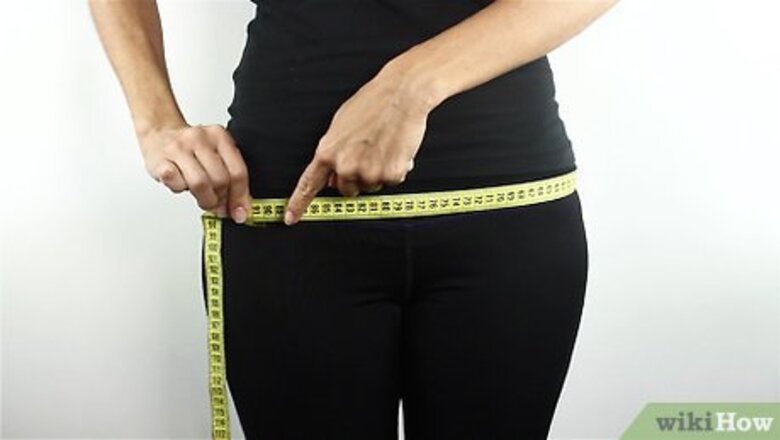
views
Making a Lace Thong

Measure yourself. Take a measuring tape and measure the circumference of your hips, or wherever you desire the thong to rest, to determine the length of the band for your thong. To figure out how long your crotch pieces need to be, take the measuring tape and measure in line with your belly button, slightly below your hips, and pull the tape underneath your crotch, through your legs, and top the top of your hips on your backside.
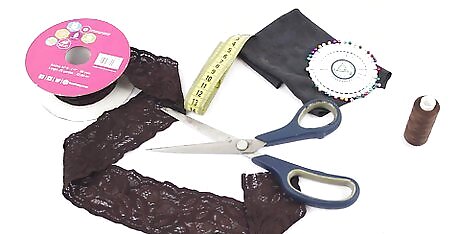
Gather your materials. Purchase lace trim that is as long as the measurements for the waistband and two times the measurements for the crotch. Depending on the width you desire for your thong, the lace should be about two inches wide. You will also need a piece of cotton fabric for the lining that is about three square inches. Make sure the cotton fabric is similar to the color of lace you choose.
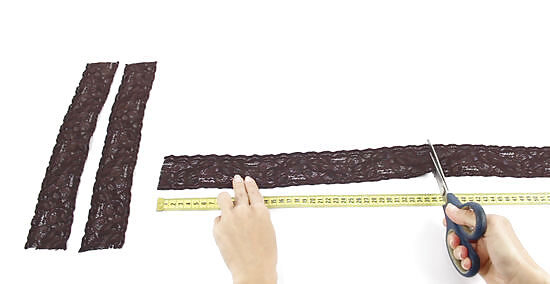
Cut your lace. You will divide your lace into four pieces, two for the band of your thong, and two for the crotch of your thong. Taking your hip measurements, divide by two, then cut the lace into two pieces for those measurements. Next, you'll cut your crotch piece by taking your crotch measurements and cutting two equal strips to be the length of the measurements. For example, if you measured 38 inches for your hips, you'll divide by two and you'll come out with 19 inches for each strip. Then if you measured 10 inches for your crotch piece, you'll just cut two 10 inch pieces of lace.
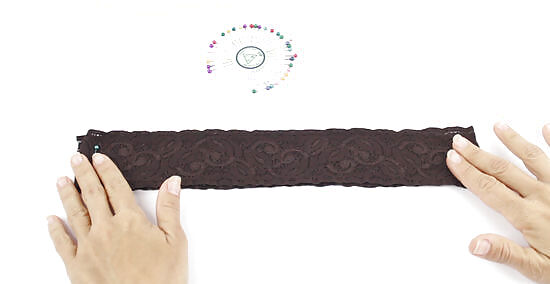
Pin the waist band together. Before you begin sewing, you'll need to pin your lace together. First, pin your hip pieces together by laying one on top of the other and then place one pin vertically on each end.
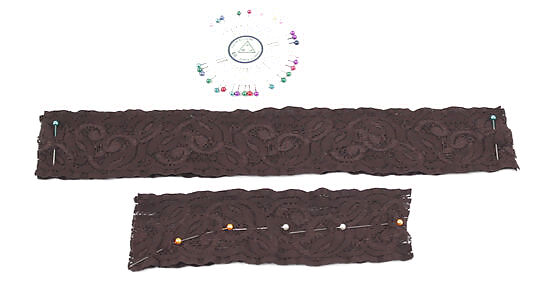
Pin your crotch pieces together. Lay your crotch pieces on top of each other, but instead of two vertical pins, you'll create a line of horizontal pins through the middle of the lace. Start at one end of your lace and place pins horizontally going across the fabric. As you start to reach the other end of your lace, begin pointing pins toward the bottom corner of your fabric, creating a down diagonal.
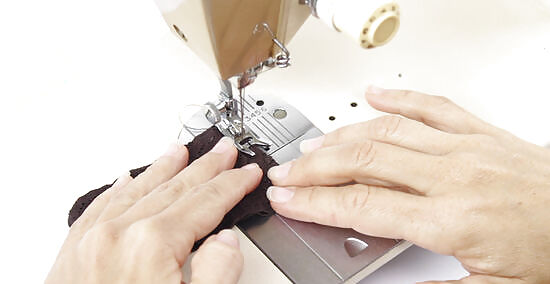
Sew the waist band together. Using a sewing a machine, or a needle and thread if you are courageous, sew both pieces together. For the best stitch, you'll want to use a serger or a zigzag stitch. Taking the waistband, sew both ends together, allowing the stitch to hang over the lace, meaning you shouldn't have any extra fabric sticking out past the stitch.
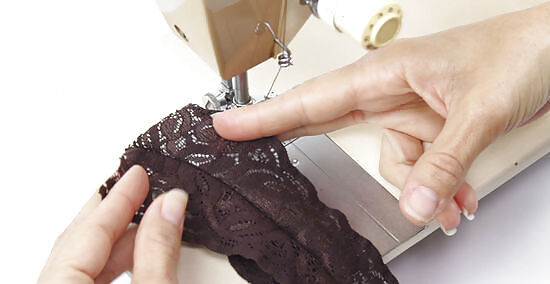
Sew the crotch piece together. This piece will be sewn a bit differently as you'll be sewing through the middle of your pieces rather than the end. Follow the pins that you placed through your thong, sewing through the middle and then down the diagonal towards the bottom corner. This will create a wider piece for the front of your thong that meets with the waistband.
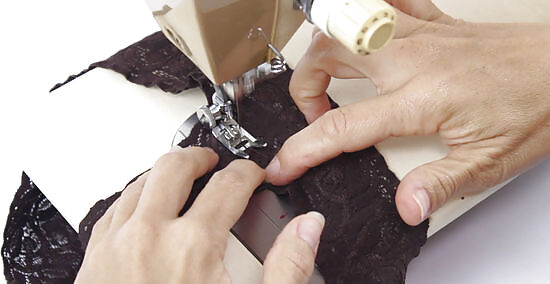
Line the seams up and sew. Taking your crotch piece, line up the wider side with one side of your waistband, both with the insides facing out and sew along the top of the crotch piece and the bottom of the waistband using a zigzag stitch. Then, do the same with other side of the crotch piece to the other end of your waistband. You should see a continuous seam, meaning you matched the seam of the crotch piece up with each seam on the waistband.

Add a cotton lining. This isn't necessary, but it is good for hygiene purposes and comfort. Taking your cotton fabric, cut a piece that fits nicely inside the crotch of your thong, and sew along three sides of the fabric, leaving the highest side (the side that will be more in the front of the thong) open.
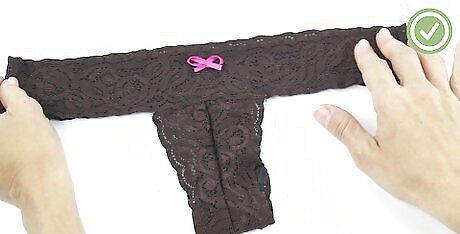
Admire the finished product. After you've finished sewing, turn your thong right side out and try it on. Because the lace is stretchy you shouldn't have had to add any extra material. If you decide the bands are too thick or not thick enough, consider buying lace trim that is less than or more than two inches wide.
Making a G-String Thong
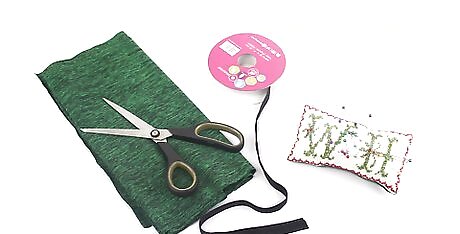
Gather your materials. For this type of thong, you will need a piece of fabric about 10 inches by 12 inches that is somewhat stretchy. You'll also need some elastic for the waistband and leg holes in your thong. Pick a color you want to match your fabric because this elastic will show. If you find that elastic is uncomfortable, you can always try substituting it for some stretchy lace, although it may not attach quite as well to your underwear.
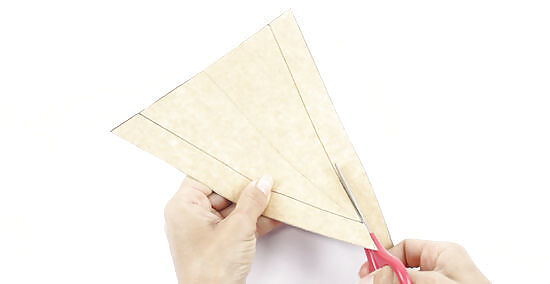
Cut out a triangle pattern for your thong. Before you cut your fabric, you'll want to create a pattern for your thong that feels most comfortable to you. A good starting point is to cut a triangle out of a piece of paper with the two longest sides at 9 inches and the top, shortest side at 7.25 inches. Hold the triangle up to yourself and decide if it needs to be bigger or smaller, and then cut it to fit the dimensions you would like for your thong. When making your thong, the tip of the triangle should point down, so cut your fabric with that in mind.

Cut your fabric triangle. Once you have decided on the dimensions for the pattern for your thong, lay the paper pattern over your fabric, trace a triangle onto your fabric, and then cut it out. If you are using a very stretchy fabric you can cut the exact dimensions of the pattern, but if your fabric has only a little stretch to it you may want to cut a slightly bigger piece so you have more fabric to work with.
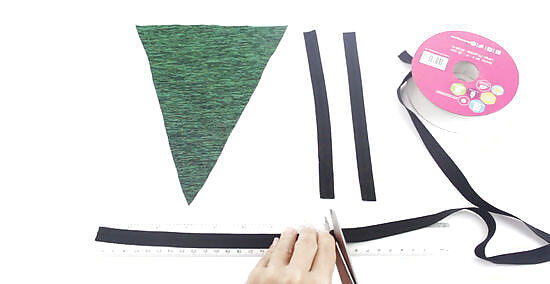
Cut three elastic pieces. You will need elastic for the waistband, the back of your thong, and for the two sides of your thong. The elastic for the sides should be one inch shorter than the side length of the triangle (you will stretch it as you sew) and the piece for the back should be about 8 inches, but you can adjust for your comfort.
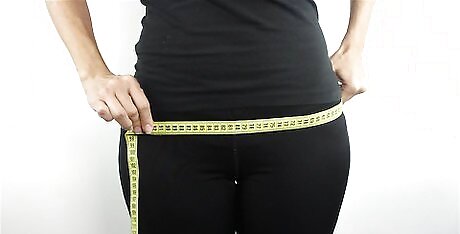
Measure your waist and cut elastic. Elastic for the waistband needs to be about one inch shorter than your hips or waist measurement, depending on where you plan to wear your thong. Use a measuring tape to measure waist or hips, and then cut a piece of elastic one inch less than that measurement. Depending on where you want your thong to sit will determine if you use your hip or waist measurements, and will also determine the length of your back elastic. If you want a higher thong, you'll need more back elastic and less elastic for your waistband, but if you want your thong to sit on your hips you'll likely need more elastic for the waistband and less for the back elastic.
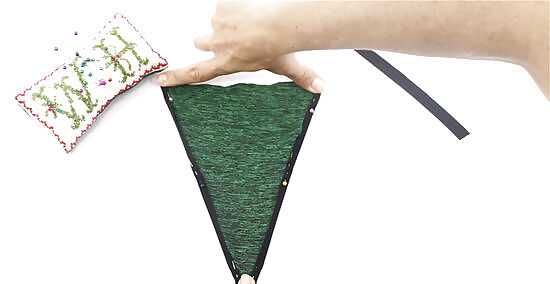
Pin elastic to the sides of your thong. Take your elastic and place it on top of your fabric at the edge, on the two longest sides of your thong (the sides that point downwards to make a V). Then, place a pin at the top of the side elastic and one at the bottom. You'll then want a pin in the middle of the fabric, so pull the fabric from both sides to stretch it out, and place a pin in the elastic towards the middle, while fabric is still stretched. When you let the fabric go your fabric may crumple up a bit, but once you sew the elastic into it and put it on, it will stretch to fit.

Sew elastic to sides. Once you have finished pinning, using a stretch stitch or a zigzag stitch, sew along the elastic, pulling and stretching the fabric as you go so that it lines up evenly.

Connect the back elastic. After you have sewn the elastic to the sides of your fabric, you'll want to connect your back elastic to the front of the thong by attaching one end of the back elastic to the bottom point of your triangle, and sewing a small seam, making sure the elastic is in the back of the fabric.
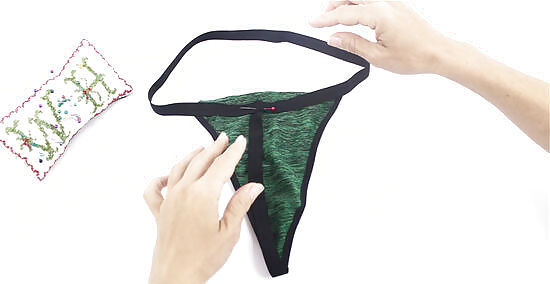
Attach the waistband to the back and sew. Before you sew your waistband to your thong, you'll want to sew the ends together, making a nice circle with your waistband. Then, sew the loose end of the back elastic to the waistband, making sure the back elastic is inside the waistband.
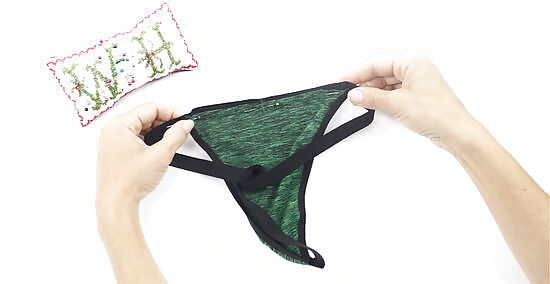
Line up your waistband and triangle. Fold the waistband in half, with the back elastic resting on the fold of the waistband. The opposite fold will be the center of your thong -- place a pin there. Then, take the center of the top of your triangle and line it up with that pin, connecting it with another pin. Your elastic waistband should be on top of your triangle fabric, to match the sides of the triangle.
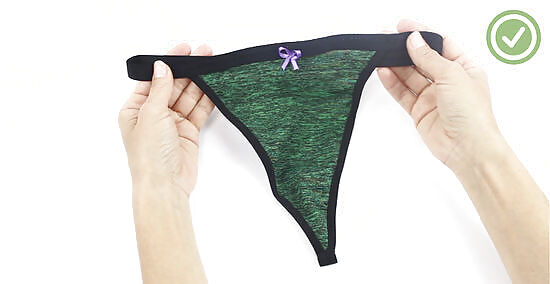
Sew the thong together. Sew along the elastic, connecting the waistband to the top of the triangle fabric and making sure to stretch the fabric as you go. Then, cut any extra threads and try your thong on, admiring your finished product!















Comments
0 comment